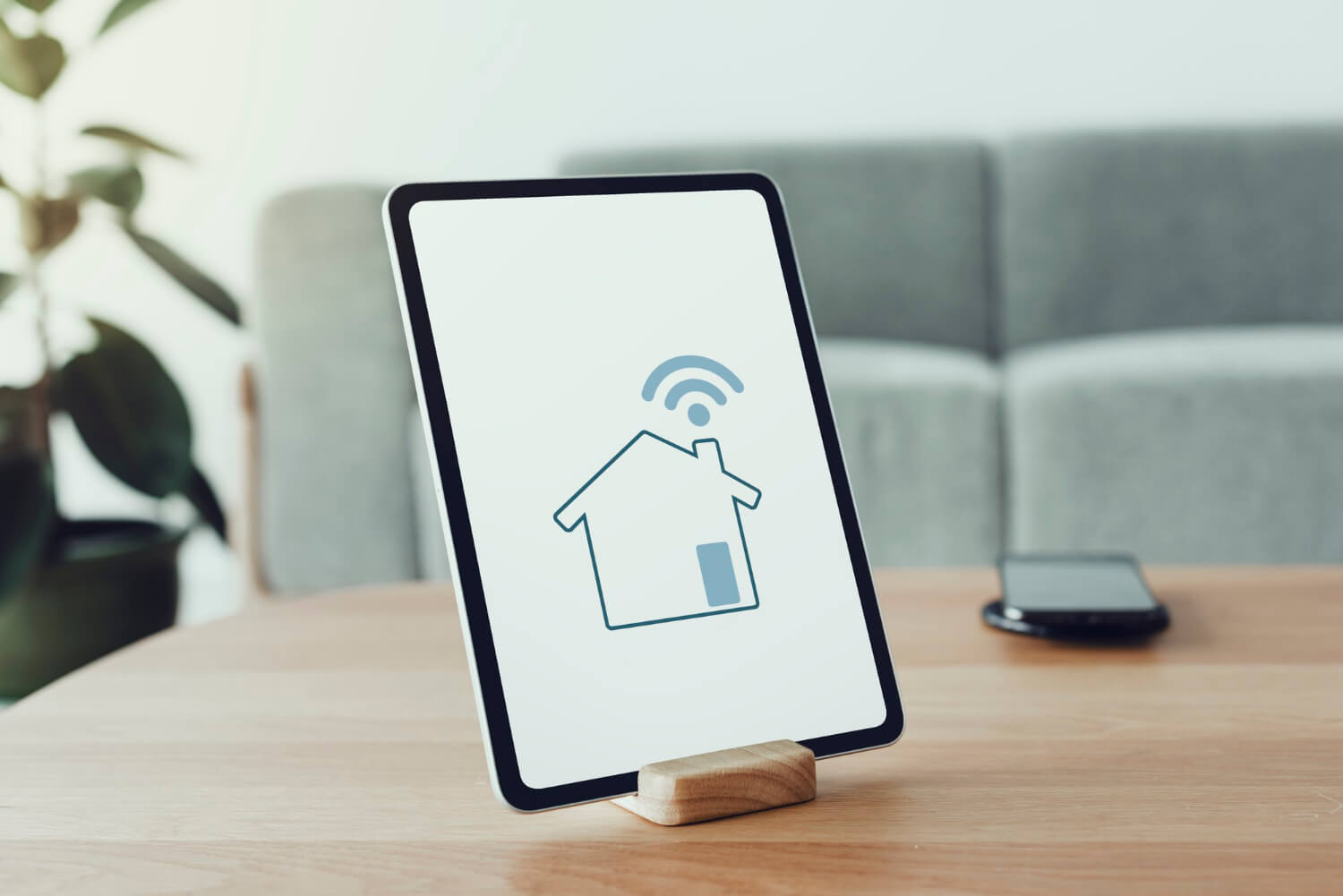If your internet drops out these days, it feels like the whole house comes to a standstill. Whether you’re working from home, streaming your favourite shows, gaming online, or running a small business, everything depends on a strong, reliable connection.
The Australian Communications and Media Authority (ACMA) reported that 98% of Australians had internet access at home in 2024, with many now connecting through 4G and 5G mobile networks. With internet use at an all-time high, more households in SA are rethinking how they connect and looking beyond the NBN.
While the NBN is still the go-to option for most homes in Southern Australia (SA), it doesn’t always tick every box. Some people want something faster, easier to set up, and not locked in by cables or contracts.
Many South Australians are now choosing home wireless broadband for its speed and flexibility. Powered by Australia’s expanding 4G and 5G networks, it’s becoming a strong alternative for households around metro and regional SA. It offers a comparable experience to traditional cable providers like Optus, Telstra, and TPG, making it a viable option for those seeking alternatives to NBN and other legacy services.
In this post, you’ll learn what home wireless broadband is, how it compares to the NBN, and when it could be the right choice for you.
Let’s dive in:
What Is Home Wireless Broadband and How Does It Work?
Home wireless broadband gives you internet access through 4G or 5G mobile networks rather than fixed-line cables like fibre or copper. It uses a modem or router that connects to nearby mobile towers, similar to how your phone connects to the internet, but built for stronger, more stable use at home.
There are two main types of wireless broadband:
- Residential (Fixed Wireless Broadband): Set up for one address with a modem that stays put, perfect for homes or small offices.
- Mobile Broadband: Portable and SIM-based, great if you need internet while travelling or moving between locations.
Most households choose residential wireless broadband because it’s easy to set up. Plug it in, turn it on, and you’ll be online in minutes with no waiting or messy cabling. Plus, coverage for home wireless broadband now reaches both metro and regional areas of SA, depending on mobile network strength.
As 5G continues to roll out throughout Adelaide, Mount Barker, and surrounding regions, more South Australians are realising how fast and reliable this option can be.
The Rise of Home Wireless Broadband in SA
Throughout South Australia, more households are choosing home wireless broadband as a faster alternative to the NBN. With easy setup and dependable performance, it’s proving to be a practical option for people who want a stable internet without the delays or restrictions of fixed-line connections.
These are some of the main reasons for this change:
The Growth of 4G and 5G Networks
Mobile network coverage around South Australia has improved dramatically in recent years. Both 4G and 5G networks now reach most parts of metropolitan Adelaide, as well as regional centres like Mount Gambier and Port Lincoln.
In many areas, 5G speeds now match or even outperform typical NBN connections, giving more homes access to fast, reliable internet without relying on fixed lines.
Why More People Are Switching to Wireless
As 4G and 5G coverage continues to grow, residential wireless broadband has become a go-to choice for renters, remote workers, and people living in new housing developments.
It’s quick to set up, doesn’t need a technician, and comes with no lock-in contracts, making it easy to take your connection with you or adjust your plan when needed. This flexibility helps households that want dependable internet without the hassle of fixed-line installation.
Home Wireless Broadband vs NBN: The Key Differences
The main differences between home wireless broadband and the NBN come down to how each connects, its setup process, performance, and overall flexibility.
Here’s how the two compare:
Connection Technology
The NBN uses fixed-line connections like fibre-to-the-premises (FTTP), fibre-to-the-node (FTTN), or hybrid fibre-coaxial (HFC). Each relies on physical cables that need to be installed in your home to deliver internet access.
In comparison, residential wireless broadband connects through 4G or 5G mobile networks. The modem links directly to the nearest mobile tower, so there’s no need for cabling or trenching. It’s a good option for areas where fixed-line setup is limited or slow to install.
Setup and Flexibility
Getting connected with the NBN typically includes a technician visit and (a bit of waiting time), as installation can take several days depending on your location. Once it’s set up, the service stays tied to that address.
Home wireless broadband, on the other hand, is ready to go within minutes. You just plug in the modem and connect, no technician needed. This makes it perfect for renters or anyone wanting a temporary connection without the wait.
Speeds and Performance
NBN fibre connections deliver consistent speeds, though performance can dip during peak times or when older technology like FTTN is used.
Home wireless broadband speeds depend on your signal strength, distance from the tower, and network activity. In strong 5G coverage areas, it can reach speeds that rival, and sometimes exceed, many NBN plans, offering impressive performance for most everyday needs.
Reliability and Coverage
Once installed, the NBN offers reliable performance, but it varies depending on the type of connection available in your area.
Residential wireless broadband performs best in metro and suburban areas with strong 4G or 5G coverage. In regional or hilly locations, weaker signals can affect speed and stability, so checking your coverage first is always recommended.
Cost and Contract Options
NBN plans can come with setup fees, fixed-term contracts, and cancellation costs. These costs are linked to the setup and maintenance of physical infrastructure, as well as the long-term contracts many NBN providers require.
Home wireless broadband is typically more flexible, with lower upfront costs and month-to-month plans. It’s a good choice for people who want the freedom to change or cancel their service without long-term commitments.
Comparison Overview: NBN vs 4G/5G Wireless Broadband
Here’s a quick comparison of how the two stack up:
| Feature | NBN | 4G/5G Wireless Broadband |
| Setup | Technician required | Plug in and connect |
| Connection Type | Wired (fibre or HFC) | 4G/5G mobile network |
| Portability | Stays at one address | Move it anywhere with coverage |
| Typical Speeds | 25–100 Mbps | 50–500+ Mbps (5G) |
| Contracts | Often fixed-term | Usually month-to-month |
| Best For | Heavy data households | Renters, small homes, or flexible users |
Every setup has its benefits and trade-offs, and knowing them makes it easier to decide if wireless broadband is the right choice for your household or not.
Pros and Cons of Home Wireless Broadband
Like any internet option, home wireless broadband has its advantages and a few limitations. Knowing both will help you decide if it suits your household and how you use the internet day to day.
Here’s the gist:
The Pros
- Fast setup: Connect within minutes without a technician or complex installation.
- Portable connection: The modem can be moved between locations, suitable for renters or temporary housing.
- Flexible contracts: Most plans are month-to-month, allowing changes or cancellations without penalties.
- Competitive speeds: 5G networks in South Australia can deliver speeds that equal or exceed some NBN connections.
- No fixed infrastructure: Good match for properties without existing cabling or where physical installation isn’t practical.
The Cons
- Variable performance: Speeds can fluctuate depending on network congestion or signal strength.
- Data restrictions: Some plans include usage limits that may not fulfill high-demand households.
- Coverage limitations: Performance depends on distance from mobile towers and local terrain.
- Less suitable for heavy use: Fibre connections generally manage multiple high-demand devices more consistently.
For most light to moderate users, 4G and 5G home broadband offers a reliable mix of speed, flexibility, and convenience. It’s a practical choice for households that value easy setup and contract freedom over fixed-line infrastructure.
When Home Wireless Broadband Is a Better Choice Than NBN
Home wireless broadband can be an effective NBN alternative, offering a faster and more flexible way to stay connected in situations where fixed-line connections fall short.
It’s most suitable when:
- NBN isn’t available or is delayed: You can get connected right away without waiting for installation or new infrastructure.
- You move around a lot: The modem is easy to take with you, making it a great option for renters or anyone who relocates regularly.
- You need fast setup: Perfect for home offices, small businesses, or short-term stays where you need an instant connection.
- You have strong mobile coverage: Works best in areas with solid 4G or 5G signals for consistent speeds.
- You want flexibility: Month-to-month plans make it easy to upgrade, pause, or cancel without long contracts.
When checking coverage and selecting a plan, keep in mind that service availability may depend on having an eligible address, and the name and address on your account must match for certain offers. Also, to keep your service active and continue to qualify for promotions, your account must remain in good standing.
Residential wireless broadband can be an excellent NBN alternative, particularly for people who want flexibility and fast setup. Once you’ve made up your mind, the next step is finding a plan that matches your household’s needs, from coverage and data limits to contract terms and ongoing costs.
Choosing the Right Home Wireless Broadband Plan in SA
Finding the right home wireless broadband internet plan depends on your usage patterns, location, and service requirements.
The following factors should be reviewed before signing up:
Data allowance
Estimate your monthly usage based on streaming, browsing, and downloads. High-data activities such as 4K streaming or gaming require larger allowances to avoid throttling or excess charges. Be sure to review the pricing for each internet plan, as costs can vary.
Speed options
4G plans offer sufficient speeds for standard use, while 5G plans are better suited for high-demand users requiring faster performance and lower latency.
Contract flexibility
Month-to-month or no-lock-in plans give you the freedom to change or cancel your service without penalties, a good choice if you don’t want long-term commitments.
Coverage quality
Always check your signal strength before signing up to make sure you’ll get a stable connection and fast speed at your address.
Why Choose a Local Provider
Choosing a local provider like RBE Internet means you get internet plans built for South Australian conditions, with quick support from people who understand the region’s network coverage. Some plans may include a one-time bill credit as a promotional offer.
Additionally, certain internet plans may come with streaming perks, such as access to TV services or popular platforms with ads. You can also upgrade or adjust your plan easily as your needs change.
Before signing up, review the full details of each plan to understand all terms, conditions, and included features. For payment options, customers can set up AutoPay from their bank account for convenience. When considering promotions, some offers may include a credit toward your bill or other incentives.
Is Home Wireless Broadband Right for You?
For many South Australians, residential wireless broadband has become a fast and reliable alternative to NBN connections. With 4G and 5G networks continuing to expand, it’s now easier to get online without waiting for installation, dealing with cables, or signing long-term contracts.
If you’re after quick setup, solid performance, and the freedom to adjust your plan as your needs change, home wireless broadband is a strong option to consider.To find a plan that matches your home and lifestyle, explore RBE Internet’s Home Wireless Broadband Plans. With the right plan in place, staying connected across SA has never been easier. Getting the right plan means you can enjoy fast, reliable internet wherever you are in SA.


